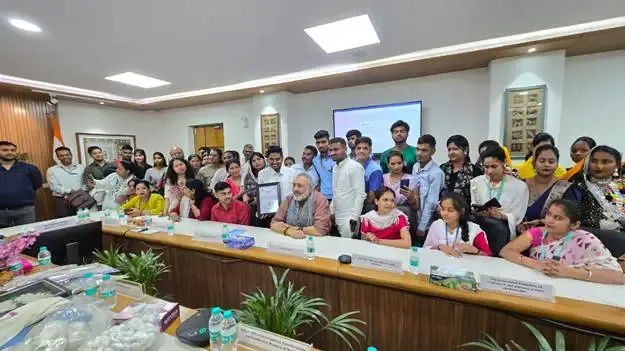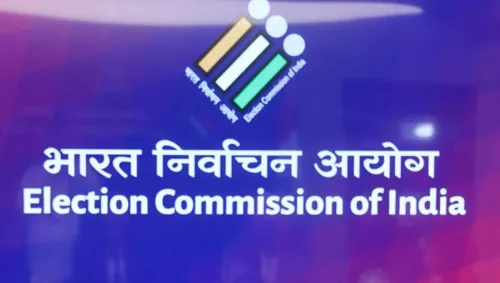How Many Beneficiaries Have Received Placements Under the Samarth Scheme?

Synopsis
Key Takeaways
- Over 4.32 lakh beneficiaries trained.
- 3.20 lakh individuals placed, with 88% being women.
- Scheme spans across India from Jammu to Andaman Islands.
- Focus on modernizing textile manufacturing and technology.
- Support for startups in the textile sector is increasing.
New Delhi, May 24 (NationPress) A total of 4.32 lakh individuals have undergone training, with 3.20 lakh securing placements to date under the Samarth scheme, as reported by the Textiles Ministry. Notably, over 88 percent of these beneficiaries are women, highlighting the scheme's commitment to empowering women in textile production, craftsmanship, and innovation, thereby promoting gender-inclusive development.
This initiative spans the entire nation, facilitating skill development from Jammu and Kashmir to the Andaman and Nicobar Islands.
The government's emphasis on enhancing textile manufacturing, modernizing infrastructure, encouraging innovation, and upgrading technology through skilled personnel aims to solidify India’s position as a global textile hub.
During a recent interaction, Union Minister of Textiles Giriraj Singh engaged with industry partners and beneficiaries of the Samarth scheme. He met individuals from various sectors such as handloom, handicraft, jute, and silk.
The beneficiaries shared their insights on how the scheme has positively impacted their livelihoods. They discussed their success stories and the substantial benefits they have received from the initiative during their meeting with the Union Minister.
The minister underscored the importance of the textile sector in India, noting it as a major contributor to employment and the advantages provided through various schemes, including the Samarth scheme.
Industry representatives expressed their perspectives on the current status of the Samarth scheme, including the challenges, growth potential, and opportunities available for skilled labor to transform India into a global textile hub.
Samarth represents a pivotal move towards workforce empowerment, aiming to incentivize and enhance industry efforts in generating jobs within the organized textile and related sectors, covering the entire value chain of textiles, excluding spinning and weaving.
In parallel, the Department for Promotion of Industry and Internal Trade (DPIIT) has reported a consistent rise in the number of new startups recognized in the textiles sector, growing from 204 in 2020 to 703 in 2023 and reaching 765 in 2024.










